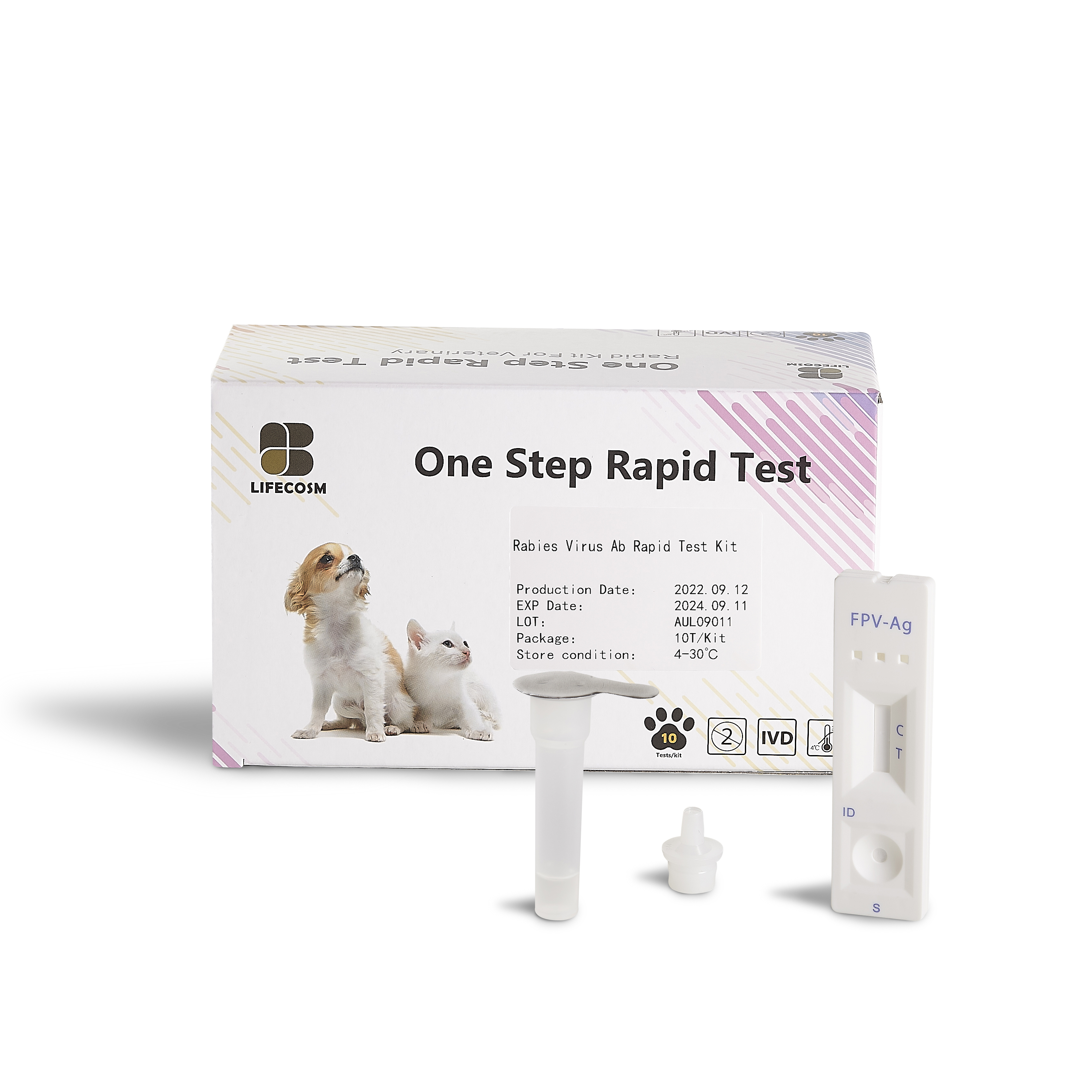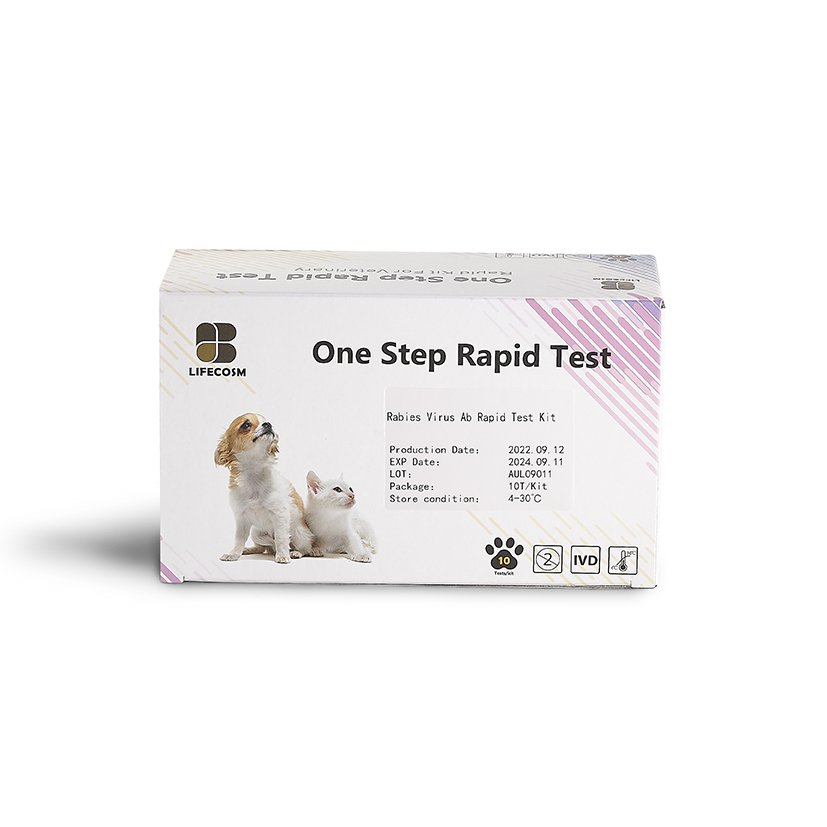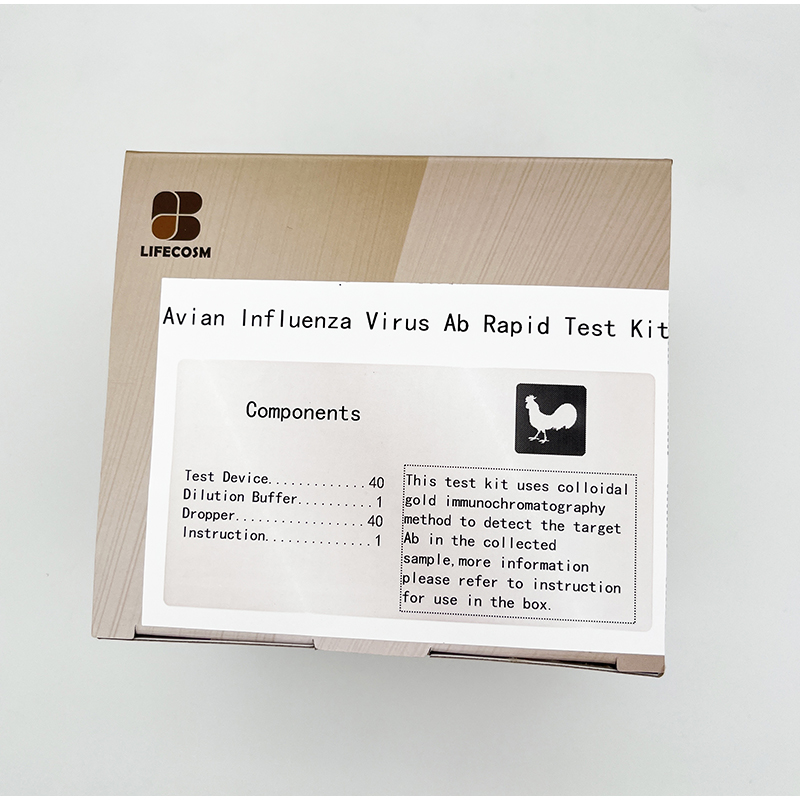
Products
Quest Diagnostic Rapid Covid Testing - Lifecosm Rabies Virus Ab Test Kit Veterinary medicine – Lifecosm
Quest Diagnostic Rapid Covid Testing - Lifecosm Rabies Virus Ab Test Kit Veterinary medicine – Lifecosm Detail:
Rabies Virus Ab Test Kit
| Catalog number | RC-CF20 |
| Summary | Detection of specific antibody of rabies virus within 10 minutes |
| Principle | One-step immunochromatographic assay |
| Detection Targets | Rabies Antibody |
| Sample | Canine, bovine, raccoon dog’s secretion of Saliva and 10% brain homogenates |
| Reading time | 5 ~ 10 minutes |
| Sensitivity | 100.0 % vs. RT-PCR |
| Specificity | 100.0 %. RT-PCR |
| Quantity | 1 box (kit) = 10 devices (Individual packing) |
| Contents | Test kit, Buffer bottles, Disposable droppers, and Cotton swabs |
| Storage | Room Temperature (at 2 ~ 30℃) |
| Expiration | 24 months after manufacturing |
| Caution | Use within 10 minutes after openingUse appropriate amount of sample (0.1 ml of a dropper)Use after 15~30 minutes at RT if they are stored
under cold circumstances Consider the test results as invalid after 10 minutes |
Information
Rabies is one of the most well known of all the viruses. Fortunately, through active vaccination and eradication programs, there were only 3 reported cases of human rabies in the United States in 2006, although 45,000 people were exposed and required post-exposure vaccination and antibody injections. In other parts of the world, however, human cases and deaths from rabies are much higher. Around the world 1 person dies from rabies every 10 minutes.
Rabies Virus
Symptoms
After coming in contact with the virus, the bitten animal may go through one or all of several stages. With most animals, the virus will spread through the nerves of the bitten animal towards the brain. The virus is relatively slow moving and the average time of incubation from exposure to brain involvement is between 3 to 8 weeks in dogs, 2 to 6 weeks in cats, and 3 to 6 weeks in people. However, incubation periods as long as 6 months in dogs and 12 months in people have been reported. After the virus reaches the brain it then will move to the salivary glands where it can be spread through a bite. After the virus reaches the brain the animal will show one, two, or all of the three different phases.
Treatment
There is no treatment. Once the disease develops in humans, death is almost certain. Only a handful of people have survived rabies after extremely intensive medical care. There have been several reported cases of dogs surviving the infection, but they are very rare.
Prevention
Vaccination is the best way to prevent infection and properly vaccinated animals stand very little chance of contracting the disease. While rabies vaccination for dogs is mandatory for all states, it is estimated that up to half of all dogs are not vaccinated. The standard vaccination protocol is to vaccinate cats and dogs at three or four months and then again at one year of age. A year later, a three-year rabies vaccination is recommended. The three-year vaccine has been tested and shown to be very effective. A few counties, states, or individual veterinarians require yearly or once every two- year vaccination for a variety of reasons that need to be explored more closely.
Product detail pictures:



Related Product Guide:
Control the quality by the details, show the power by quality. Our enterprise has strived to establish a remarkably efficient and stable team team and explored an effective excellent control system for Quest Diagnostic Rapid Covid Testing - Lifecosm Rabies Virus Ab Test Kit Veterinary medicine – Lifecosm , The product will supply to all over the world, such as: El Salvador, Uzbekistan, San Francisco, Furthermore, all of our products are manufactured with advanced equipment and strict QC procedures in order to ensure high quality. If you are interested in any of our products, please don't hesitate to contact us. We will do our best to meet your needs.
We have worked with many companies, but this time is the best,detailed explanation, timely delivery and quality qualified, nice!


